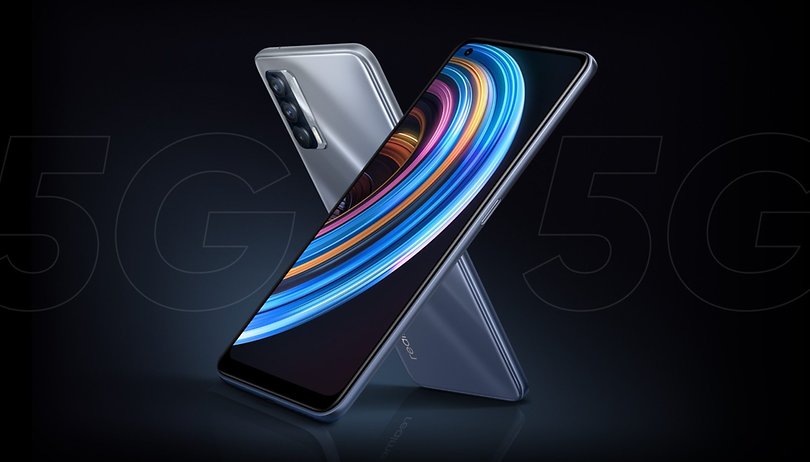Realme X7, X7 Pro mid-range handsets launched; How good are these phones?


Read in other languages:
Nearly five months after they were first introduced in China, Realme has launched two of its latest X Series handsets in India. Known as the Realme X7 and the X7 Pro, both these phones could make it to Europe in the not too distant future.
Highlights
- Realme X7 and X7 Pro are currently available in India, China, Malaysia, Taiwan and Thailand
- Both phones use MediaTek chipsets (Dimensity 1000+ on the X7 Pro and Dimensity 800U on the X7)
- Prices start at 228 EUR and go up to 340 EUR
The Realme X7 and the X7 Pro are an offshoot of Realme’s X series lineup that have in the past included handsets like the Realme X50 5G, Realme X50 Pro, Realme X2, and the Realme X3 SuperZoom. The lower-priced of the two phones - the Realme X7 - seems to be targeted at Xiaomi’s Mi10i (also known as the Mi10T Lite), and the Motorola Moto G 5G – both of which were only recently launched in India. The Pro variant of the phone, on the other hand, targets the likes of the OnePlus Nord and the Xiaomi Mi10T.
Realme X7 Pro: An affordable flagship?
The Realme X7 Pro’s claim to fame is the MediaTek Dimensity 1000+ SoC that powers the phone. This is quite a powerful chipset that also gets an integrated 5G modem with support for the all-important Dual Sim Dual Standby feature (DSDS).
It is based on a 7nm manufacturing process (pretty much the standard for last year) and gets four fast ARM Cortex-A77 cores clocked at up to 2.6 GHz and four power-efficient Cortex-A55 cores that chug up to 2 GHz. For graphics, there is the 9 core ARM Mali-G77 MC9 GPU. This is more than enough firepower to play the latest games with the graphics settings cranked up to the hilt.

As expected of an affordable flagship, the X7 Pro gets a Super AMOLED panel with a claimed peak brightness of 1200 nits. It measures 6.55-inches across and boasts FHD+ resolution. The panel also supports 100% DCI-P3 and 103% NTSC gamuts. The camera setup on this phone includes a 64MP primary, 8MP ultrawide, and a 2MP depth sensor. For selfies, the phone gets a 32MP camera housed within a ‘punch-hole’.
The Realme X7 gets a 4,500mAh battery that supports 65W SuperDart charging. It will be sold in a single 8GB+128GB variant and in two colour options: Fantasy and Mystic Black.
There are some notable omissions, though: these include the lack of a 3.5mm jack, support for just UFS 2.1 speeds and the lack of a telephoto lens. People are already complaining that the phone is already outdated since MediaTek has launched newer, faster SoCs.
Realme X7: Budget phone with some compromises
Sitting lower down the price segment is the Realme X7 which gets the mid-range MediaTek Density 800U SoC. This chipset is also based on a 7nm manufacturing process but gets two ARM Cortex-A76 cores and six power-efficient Cortex-A55 cores. The phone gets almost the same rear camera setup as its more expensive sibling with a 64MP primary camera, an 8MP secondary ultrawide camera, and a2MP depth sensor. A strange decision that prospective buyers of the ‘Pro’ version shall certainly not appreciate.
The Realme X7 is also slightly smaller in size compared to the ‘Pro’ and gets a 6.44-inch AMOLED panel with a peak brightness of 600 nits. The biggest downer, perhaps, is the lack of support for a high refresh rate. The panel is locked at 60Hz which is definitely no what you expect from a device at this price range anymore. The phone does boast of a touch sampling rate of 180Hz.

The smaller size of the phone also means that the battery capacity is also lower at 4310mAh. It does shine on the charging speed front, though, thanks to support for 50W fast charging that promises to 0 to 50% charge in just 18 minutes. Also, note that this phone - just like the Pro version - comes sans a 3.5mm audio jack.
The Realme X7 gets two colour options: Space Silver and Nebula and comes in two versions 6GB+128GB and 8GB+128GB with the prices as follows
- Realme X7 6/128 - Rs 19,999 (EUR 228)
- Realme X7 8/128 - Rs 21,999 (EUR 250)
There is no word if these devices will come to Europe soon.



















